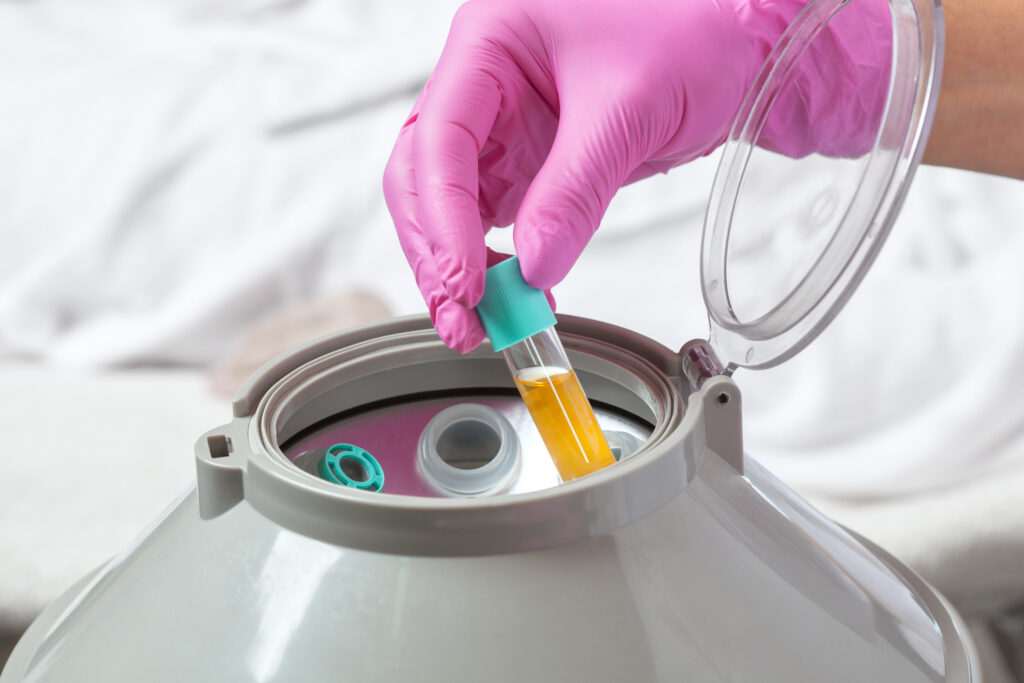Regenerative medicine uses the body’s own cells to heal injuries. Can it help you?
If you’ve torn a tendon or suffer from chronic joint pain, regenerative medicine could be the answer to avoiding surgery. A fairly recent development in medical treatments, regenerative medicine uses the body’s own cells to promote healing and reduce pain from injuries or degenerative conditions such as arthritis. As such, regenerative medicine has become a widely accepted and effective therapy in orthopedics.
Since it uses your body’s own cells, you stand a slim chance of negative side effects. In this article, we’ll dive deeper into the ways this promising field of medicine can potentially help you in your rehabilitation from an orthopedic injury.
How regenerative medicine is used in orthopedics
Within the field of regenerative medicine, the two primary treatment options are platelet-rich plasma therapy (PRP) and stem cell therapy. Both therapies can be performed in a brief office visit and are relatively painless. How long it takes to notice results will vary. Here’s a closer look at each:
Platelet-rich plasma (PRP) therapy
What is it: Your blood consists of red blood cells and plasma. While red blood cells give your body the energy it needs, your plasma is just as important. It contains platelets which are vital to your body’s growth and healing. PRP injections are one of the first lines of treatment to repair soft tissue injuries, which is why many professional athletes are given a PRP shot after an injury.
How it’s obtained: To obtain platelet-rich plasma, your blood is spun in a centrifuge that separates the plasma from the red blood cells. The concentrated platelet solution is then injected into your body, specifically where the injury or pain occurred.
What it’s used for: PRP injections are used to treat a variety of orthopedic conditions, such as chronic tendonitis from golfer’s and tennis elbow. The injections can also heal muscle and ligament injuries as well as osteoarthritis. As the plasma regenerates cell growth, you’ll have increased mobility and experience less pain.
PRP injections also offer aesthetic benefits as well, as they can help regrow lost hair and rejuvenate skin.
Stem-cell therapy
What is it: Stem cells are your body’s “original” cells. As you develop, your stem cells divide into a muscle cell, a red blood cell, or a brain cell. Or, they can remain as stem cells and replenish other cells when needed. Because of their regenerative powers, stem cells can lessen inflammation and alleviate pain as new cells are born.
How stem cells are obtained: The stem cells are extracted from your hip bone, and then put in a centrifuge where they are concentrated into a liquid. The resulting solution is then injected into the body.
What stem cells can treat: Similar to PRP injections, stem cell therapy can treat a variety of orthopedic conditions. In particular, it’s been shown to treat arthritis, ligament damage, cartilage loss, and tendonitis in the knee joint. You can avoid cortisone shots and potentially a knee replacement surgery with stem cell therapy. Similarly, this treatment has also been used on painful shoulders with cartilage, bone, and ligament damage.
Don’t live with pain any longer
Regenerative medicine is a relatively new field of study, but it’s constantly evolving and shows promise in helping many people overcome pain, injuries, and other serious health conditions. Surgery isn’t your only option to relieve joint and muscle pain. At New York Bone & Joint Specialists, our physicians use a variety of treatments to help you overcome pain and restore your joints, including PRP injections. Consult with one of our orthopedists today to find out more.




